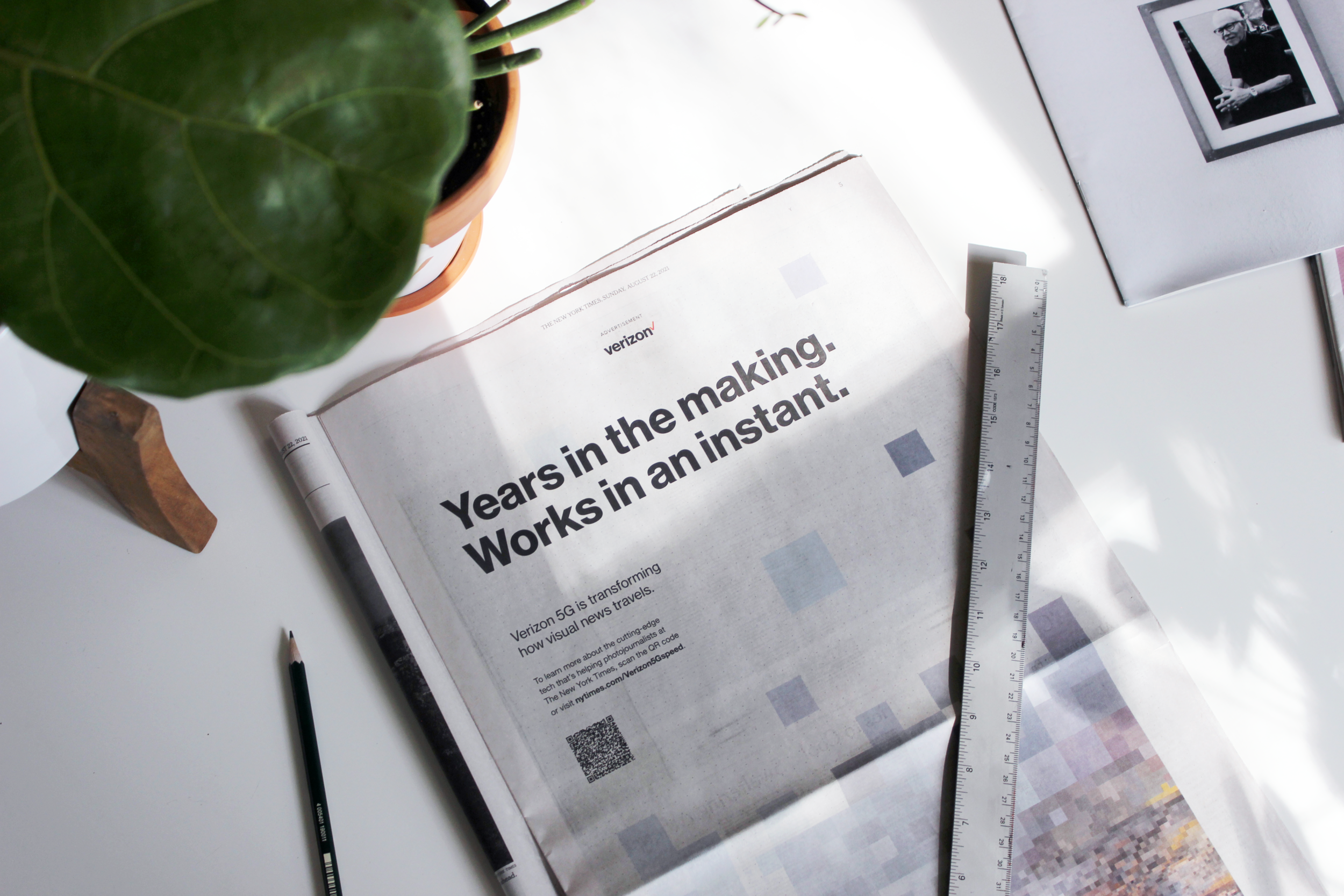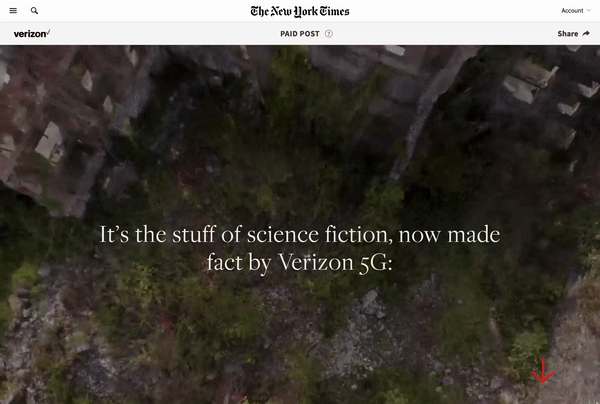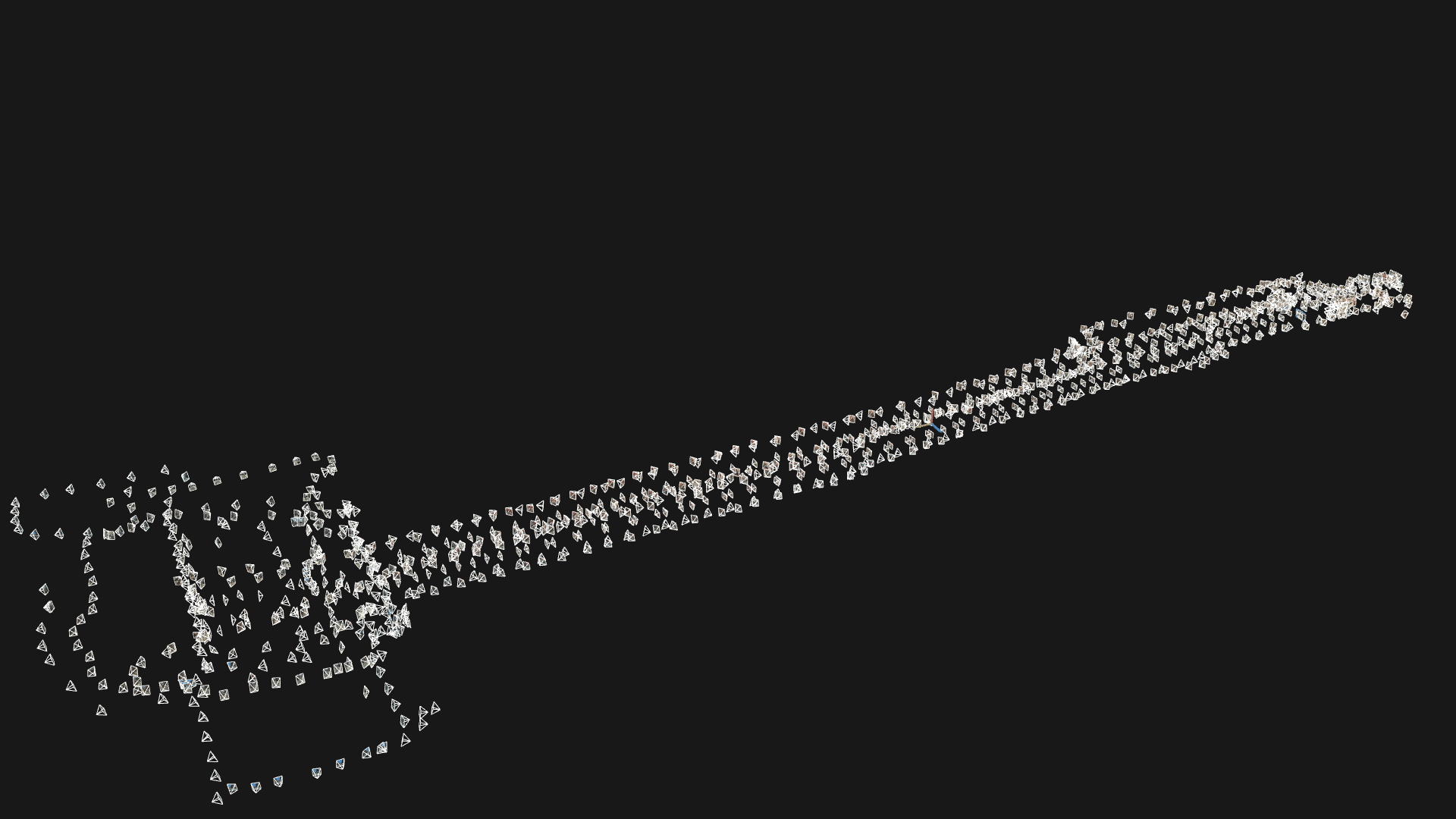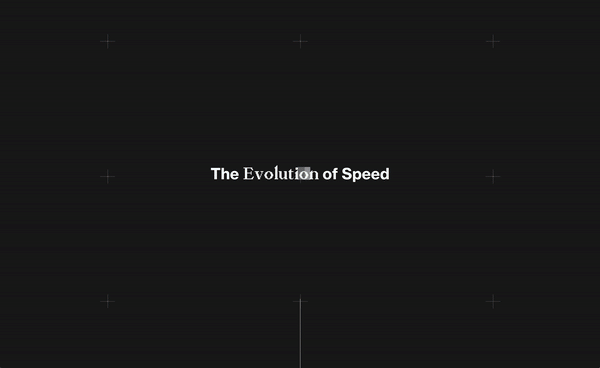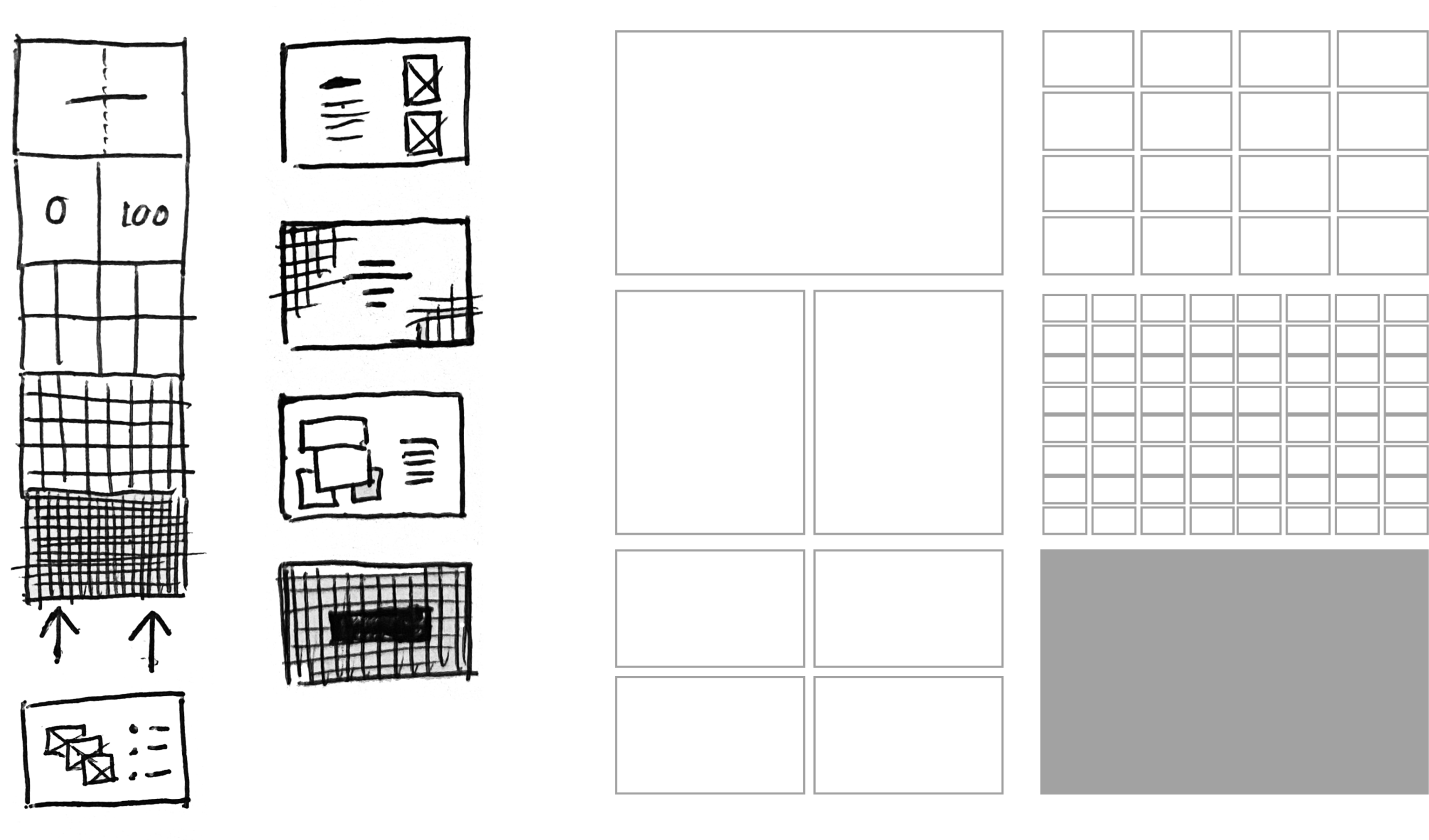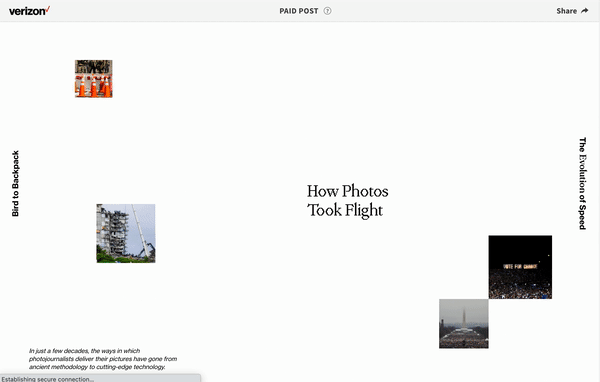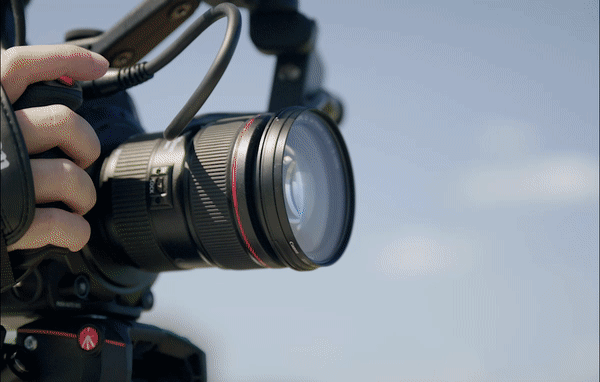Verizon | The New York Times
“A lie can travel halfway around the world while the truth is still putting on its shoes.”
Role: Art Direction, Creative Director, Design
Back in 2019, The New York Times and Verizon began a collaboration, which included the creation of the 5G Journalism Lab as an extension of The Times’s R&D team. Since then, The Times’s R&D team has been developing and testing new technologies that help journalists capture more immersive images and grant readers a firsthand perspective on breaking news.
To share this work with our readers and the world, we created a robust ecosystem of journalism, marketing, and immersive storytelling, surrounding these three technologies:
Environmental Photogrammetry
Environmental photogrammetry or (EP) for short, is the process of uploading hundreds or even thousands of photographs and transforming those stills into a 3-D scene. This technology gives editors the ability to create guided step-by-step immersive narratives, and even allows viewers to focus and linger on aspects that are most interesting to them. Instead of just looking at a photo of a space, readers can move through it.
In Behind the 5G Experience, T Brand explores the ways in which 5G has changed the face of digital journalism.
Beam
In early 2020 The New York Times R&D team developed Beam, a proprietary photo app that streamlines how New York Times photojournalists work in the field.
In The Evolution of Speed, we created a fully custom interactive experience that explored the idea: what does speed look and feel like? And could we visually express the process of transmission?
We used almost 100 photos shot by NYT photojournalists to create digital collages with interactive reveals. We also experimented with scroll-based animations, to create a deep sensation of momentum and acceleration.
Using a grid of pixels that grows at an exponential rate, we created a visual metaphor that illustrates the speed of innovation and growth in 2 ways:
Increase in pixels = increased quality
(pixel density, increased image quality over time)
Increase in pixels = increased quantity
(ability to transmit an increased number of images per second over time)
In collaboration with interactive designer Patrik Hübner, we created various extremely unique experiences throughout the piece for our readers to discover and engage with.
Eclipse
Building upon the advances of Beam, the Eclipse app leverages Verizon 5G to expand video journalism. It allows video journalists to get material into their editors’ hands in close to real-time, rather than hours later. Eclipse can use 5G to transmit professional video files that meet The Times’s quality standards at a speed that competes with uploads of mobile phone videos, which have file sizes roughly 14 times smaller.
When Headlines Come to Life, demonstrates how this important milestone for The New York Times impacts not only our journalists but our readers. Featuring behind-the-scenes field tests conducted by The Times’s R&D team and original reporting, we explain Eclipses' practical application and contextualize its value.
